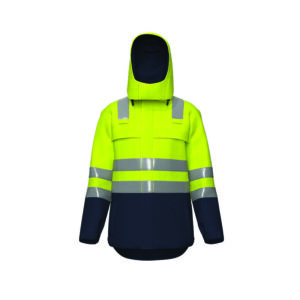- About
- Shop
-
-
- Hazards
- Arc Flash ProtectionArc Flash Protection Get peace of mind with Arc Flash Protection wear by Harbor365, designed to handle intense thermal exposures common in electric utilities and industrial settings. Arc Flash Protective Clothing Harbor365’s Arc Flash apparel is designed for high-energy arc environments. With ratings up to HRC 4, our products use durable and reliable fabrics to provide maximum protection while ensuring comfort for the wearer. Why Choose Harbor365 for Arc Flash Protection? – ATPV-Rated Protection tested by best labs of Europe, Meeting IEC 61482 and NFPA standards – Comfort in High Heat: Materials engineered for comfort while reducing heat stress. – Durable & Lightweight: Enhanced fabric resilience to withstand daily industrial use.
- Chemical Splash Protection
- Molten Metal Splash Protection
- Rainwear
- Hazards
-
-
- Industries
- Construction
- Data Center
- Electrical Utility
- EVs & Charging
- Firefighter
- General Industry
- Marine
- Oil & Gas (O&G)
- RailwaysLorem Ipsum is simply dummy text of the printing and typesetting industry. Lorem Ipsum has been the industry’s standard dummy text ever since the 1500s, when an unknown printer took a galley of type and scrambled it to make a type specimen book. It has survived not only five centuries, but also the leap into electronic typesetting, remaining essentially unchanged. It was popularised in the 1960s with the release of Letraset sheets containing Lorem Ipsum passages, and more recently with desktop publishing software like Aldus PageMaker including versions of Lorem Ipsum It has survived not only five centuries, but also the leap into electronic typesetting, remaining essentially unchanged. It was popularised in the 1960s with the release of Letraset sheets containing Lorem Ipsum passages, and more recently with desktop publishing software like Aldus PageMaker including versions of Lorem Ipsum
- Solar Energy
- Welding
- Wind Energy
- Hazards
- Training & Resources
- Collection

Menu
- ENG
- DU
- AR



